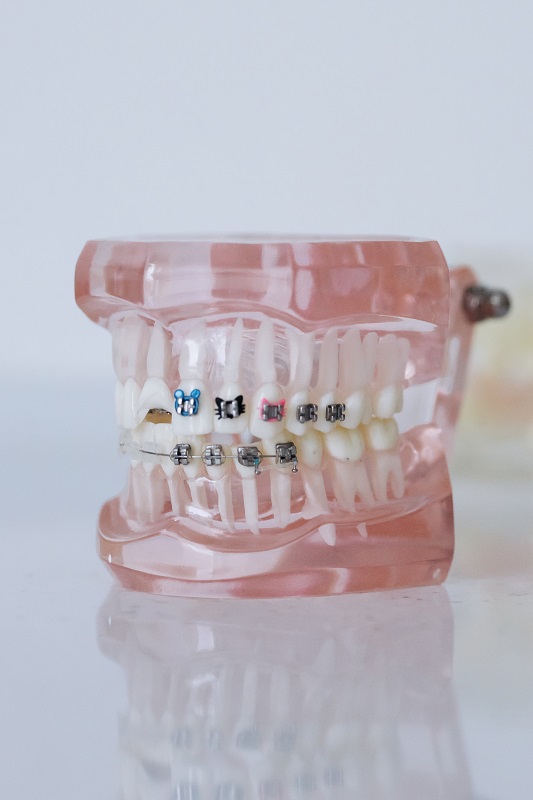
 We care about our patient’s well being and comfort in our office and as such we encourage you to be active in your treatment. A great way to be active is to learn more about your treatment and the orthodontic process. Understanding how your teeth move and how orthodontics works can help you to feel more comfortable with your treatment as we work together to create a healthier, straighter, smile.
We care about our patient’s well being and comfort in our office and as such we encourage you to be active in your treatment. A great way to be active is to learn more about your treatment and the orthodontic process. Understanding how your teeth move and how orthodontics works can help you to feel more comfortable with your treatment as we work together to create a healthier, straighter, smile.
Can your teeth move?
Yes! Your teeth can shift and move due to your body’s incredible ability to adapt to certain situations and stressors. Your teeth move when slight pressure is applied to them over time, this can happen due to overcrowding, smaller jaws, or crooked teeth. As orthodontists, we use your body’s ability to adapt to also correct any malocclusions so that you can have the smile you’ve dreamed about.
Retainers, lingual braces, headgear, aligners, and traditional braces are just a few methods we use to straighten your smile.
What are braces?
Braces are one of the most common treatment options for correcting your smile. Braces are composed of several different parts that work together to create gradual gentle pressure on your teeth and jaw to move your teeth into the correct alignment.
When learning about how orthodontics works, it is a good idea to get to know the parts of your braces.
Brackets
Once your teeth are clean and dry, a bracket is applied to your teeth and bonded to the surface using glue. Brackets can be made of ceramic, plastic, or stainless steel. Just as your teeth are different shapes and sizes, your brackets are custom-made for each tooth for a proper fit. These brackets help ensure that pressure is applied evenly throughout your mouth and are connected by an archwire.
Archwire
An archwire is a thin, rod-like piece of metal that connects all the brackets in your mouth. They can be made of stainless steel, nickel titanium, or copper titanium. These metal wires are responsible for creating the right amount of pressure against your teeth to move them into their optimal position.
Elastic Bands
Elastic bands also known as ligatures that connect to your brackets create additional pressure on your teeth and jaw. They can help to move an individual tooth or group of teeth in a certain direction.
They come in a variety of colors including clear or tooth-colored so that you can tailor your smile to your style during treatment.
How do braces move your teeth?
The brackets and archwire are the “heavy lifters” when it comes to moving your teeth. They control the amount of pressure used to guide your teeth into the right alignment.
At first, the archwire may be thin and flexible, but as you progress further into treatment the wire will become thicker and less flexible to apply more pressure to your teeth and jaw.
Each tooth is covered by a ligament and surrounded by bone. During orthodontic treatment, pressure is placed on your teeth causing the ligaments to stretch and loosen slightly. As your teeth shift, osteoclasts are produced to break down some of the bone surrounding your teeth so your tooth can move. Don’t worry though–new bone is created to support your tooth’s new position thanks to osteoblasts!
At every appointment, we evaluate your progress and adjust your wires to keep consistent pressure on your teeth. Most appointments are scheduled every six to eight weeks to give your teeth time to shift and adjust at a steady pace.
Does it hurt?
Treatment can cause some discomfort, tenderness, and soreness as your teeth shift into their new position. Irritation can also be caused by the brackets and wires rubbing against the soft tissues of your mouth.
Why does treatment take a long time?
We do our best to keep your treatment length as short as possible. The average course of treatment can take anywhere from 1 to 3 years. You can help keep your treatment time short by following your orthodontist’s instructions for the care and maintenance of your braces.
It takes time to move your teeth properly, if your teeth move too fast, it can not only be painful but also damage the roots of your teeth and the surrounding bone and soft tissues. Once your treatment is completed, you will be asked to use a retainer to help ensure your teeth, bones, and surrounding tissues remain in their new position.
Whether you are considering orthodontics, in the middle of treatment, or about to have your braces removed, we are here to help you in your journey towards a straight and brilliant smile. For more information on orthodontics and our services or to schedule an appointment, contact Kossowan Orthodontics today.